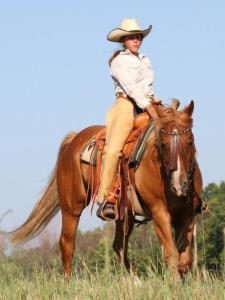 If riding simply entailed proper movements to speed up, slow down, and steer the horse, it would be elementary. Like riding a bike.
If riding simply entailed proper movements to speed up, slow down, and steer the horse, it would be elementary. Like riding a bike.
But cyclists don’t often talk about how much they are still learning 30 years after they picked up the sport. Horse riders, even those doing it professionally, DO say they’re still learning.
It’s essential to be an open-minded “learnaholic” if you’re interested in advancing your horsemanship. The reason riding is the hardest thing in the world to do? Our education has so many angles and it comes in so many forms. To note a few:
Horse movement
One must have an understanding of how the horse moves in order to ride well. Before you start talking about long trots or collection or transitions, you need to know how your horse can move and how it then moves with a rider aboard. It’s about anatomy, conditioning, muscle strength, flexibility, etc. It often helps to just watch horses in a field or paddock, especially with other horses. 
Horse behavior
The more you understand what’s going on in the horse’s head, the more you’ll be able to incorporate that knowledge into better riding. For instance, it’s essential to know about prey instinct, herd instinct, and the neurochemical craving for homeostasis.
Awareness
All around the world, humans are trying their best to be more “mindful.” But in horse work, the need for awareness is amplified and multi-form:
— Body awareness
It’s essential to know what you’re doing with your body and how it is impacting your horse’s movement and behavior. Some riders go for years without realizing that they are out of balance. Others blame their horses for missteps when it has everything to do with rider position.
 Generally, horses have a harder time if their riders are out of shape and inflexible. Fitness and range of motion, therefore, become essential components of good riding.
Generally, horses have a harder time if their riders are out of shape and inflexible. Fitness and range of motion, therefore, become essential components of good riding.
— Mental awareness
Distracted? Stressed? Nervous? Apprehensive? Angry?
Those human emotions have very real consequences when we interact with horses. Not only do horses sense them, those feelings affect how we move and react to horses’ movements.
Good riders learn to shed those mental hang-ups when they interact with horses. Some seem to walk away from daily people problems. Others develop strategies to use mid-ride, like singing when galloping or leaving the cell phone at home, to ensure a focused, mentally-healthy ride.
 There’s also another level of mental awareness. It has to do with being honest with yourself about your weaknesses and faults as a human being. Clinicians often note that life’s challenges and baggage will impede horsemanship improvement. Amy Skinner explains: “Problems in our day-to-day lives carry into our riding lives. We can’t fix our riding problems without fixing our lives.”
There’s also another level of mental awareness. It has to do with being honest with yourself about your weaknesses and faults as a human being. Clinicians often note that life’s challenges and baggage will impede horsemanship improvement. Amy Skinner explains: “Problems in our day-to-day lives carry into our riding lives. We can’t fix our riding problems without fixing our lives.”
While we work hard to shed detrimental elements of our humanness, we must nonetheless retain the smarts gained from research and experience. It’s a challenging duality unique to humans: how to be smart, savvy, mindful, and adaptable all at the same time!
[Skinner noted that teaching horsemanship doubles her challenge: “It’s hard because you have to figure out your student psychologically and physically. What are they doing and how might I get them to move their bodies differently? Then you also need to see what the horse needs and help the rider feel that and follow directions,” she said. Read more about the challenges of teaching riding here. ]

Amy Skinner
This spring, renowned horseman Warwick Schiller had a “full-on epiphany.” He tried giving a horse more time to think, decide, and relax. The results astounded him:
A troubled horse laid down and napped for hours in the middle of a clinic. ‘”And I really think that horse had not had a relaxed moment in his captive life,” said Schiller of the horse, a mustang who had been rounded up, split from his herd, and sold to adopters.
With another horse, haltering was always a problem. Schiller would see his jaw tighten and turn his head away. Again, the Australian looked to make changes in the most basic elements of his horse work.
“What I’m after is so much more microscopic than I realized,” said Schiller. “When horses can’t calm down, it’s up to us to let them find it. Often it’s just slowing down and waiting.”
In October, you’ll have a great chance to learn more from Schiller and fellow world renowned presenters. Check out the Best Horse Practices Summit roster.

Warwick Schiller will be at the BHP Summit
Extra reading:
Juliana Zunde on testing your harmony.
Check out HorseHead: Brain Science to improve your horse work